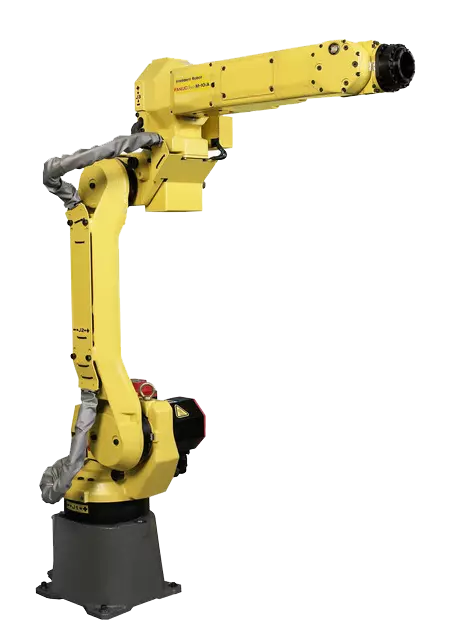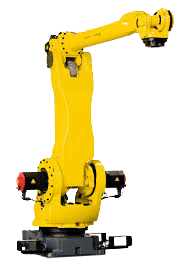The Use of FANUC Robots in Automobile Production
The automotive industry was one of the first industries to adopt robotic automation and even today they remain the top buyer of industrial robots than any other industry. It should not come as a surprise to learn that FANUC, one of the largest industrial robot companies in the world, is a top robotic supplier to automobile manufacturers. FANUC carries a variety of robots to cover all bases of the automobile production process, if you were to visit an auto manufacturer chances are you will see FANUC robots like the R-2000ib/210F on the production line. Automotive manufacturers rely on FANUC robotics to retain a competitive edge by improving quality, productivity, and safety.
Automotive Applications for FANUC Robots
Vehicles are complex to manufacturer and many applications involve repetitive, laborious work. FANUC robots help streamline the production process for cars by automating the following applications:- Welding- FANUC welding robots are some of the most dominant types in the industry. Conventional vehicles use all metal components and virtually all car frames are welded together with ,spot welding robots like the FANUC R-2000ib/210F. FANUC TIG welding robots, such as the FANUC Arcmate 120ic, produce clean, high-quality welds that protect against corrosion and ensure durability. Because of this they are commonly used to weld exterior parts such as fenders to prevent rust from occurring.
- Painting - Painting is one of the oldest robotic applications and was first introduced in the automotive industry. FANUC painting robots, are programmed to follow accurate paths without any deviation. The correct amount of paint is applied to vehicles resulting in even and uniform parts, eliminating errors such as overspray and dripping. Their longer reach allows them to easily paint large vehicle bodies with precision.
- Assembly - Assembly applications can be tedious and repetitive in nature which is why automobile manufacturers have automated them with FANUC robotics. Small components such as car motors are assembled with high-speed Delta robots like the FANUC M-2ia. While other FANUC assembly robots, such as the FANUC M-710ic/50, are used to assemble windshields and mount steering wheels. These robots can even complete the precise task of driving screws into vehicle parts.
- Machine Tending - FANUC machine tending robots automate some of the most hazardous jobs of vehicle manufacturing. These robots complete machine tending tasks including loading and unloading of hot molten material from injection or die casting machines. Efficiency is increased with FANUC robots like the FANUC R-2000ic/165R, because they are capable of tending two machines at once as well as swap out parts and materials at much faster rates than humans.
- Material Removal - Cutting and trimming applications are a breeze for FANUC robots like the FANUC M-20ia, since they are equipped with force sensing technology to maintain consistent and accurate pressure on an object’s surface. Material waste is reduced as these robots eliminate errors with material removal applications. FANUC robots can trim flash from moldings or die castings as well as cut fabrics for vehicle interiors, door trim, and steering wheels.
- Part Transfer - FANUC part transfer robots are equipped with iRVision, high payloads, and long reaches. Automotive manufacturers commonly use them to transfer metal stamps from one press to another as this can be a dangerous task, but used FANUC robots like the FANUC M-900ia/260L handle it without failure.
Robots Done Right is the place to start when it comes to used robots. Contact us if you are interested in buying or selling your used robot.




